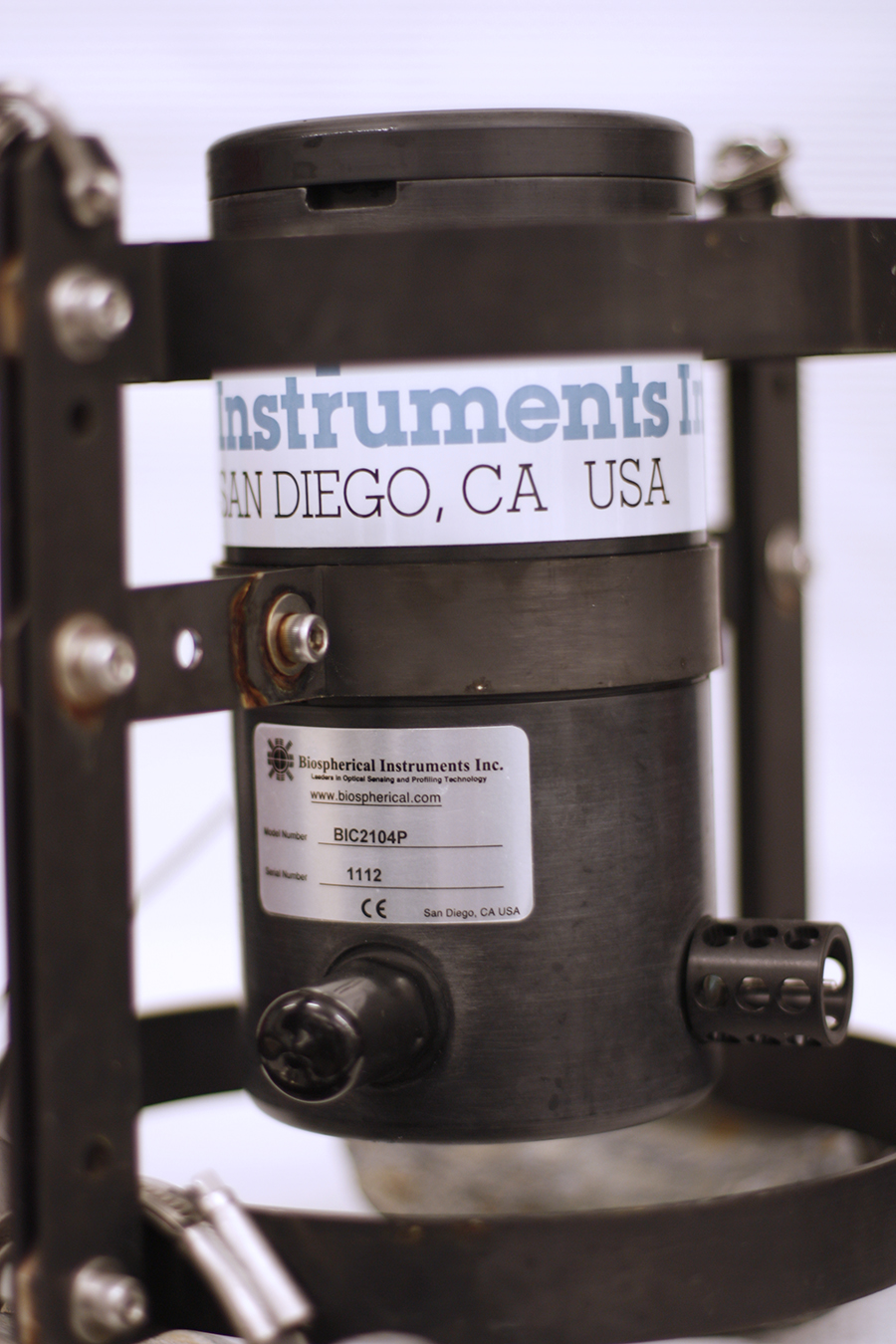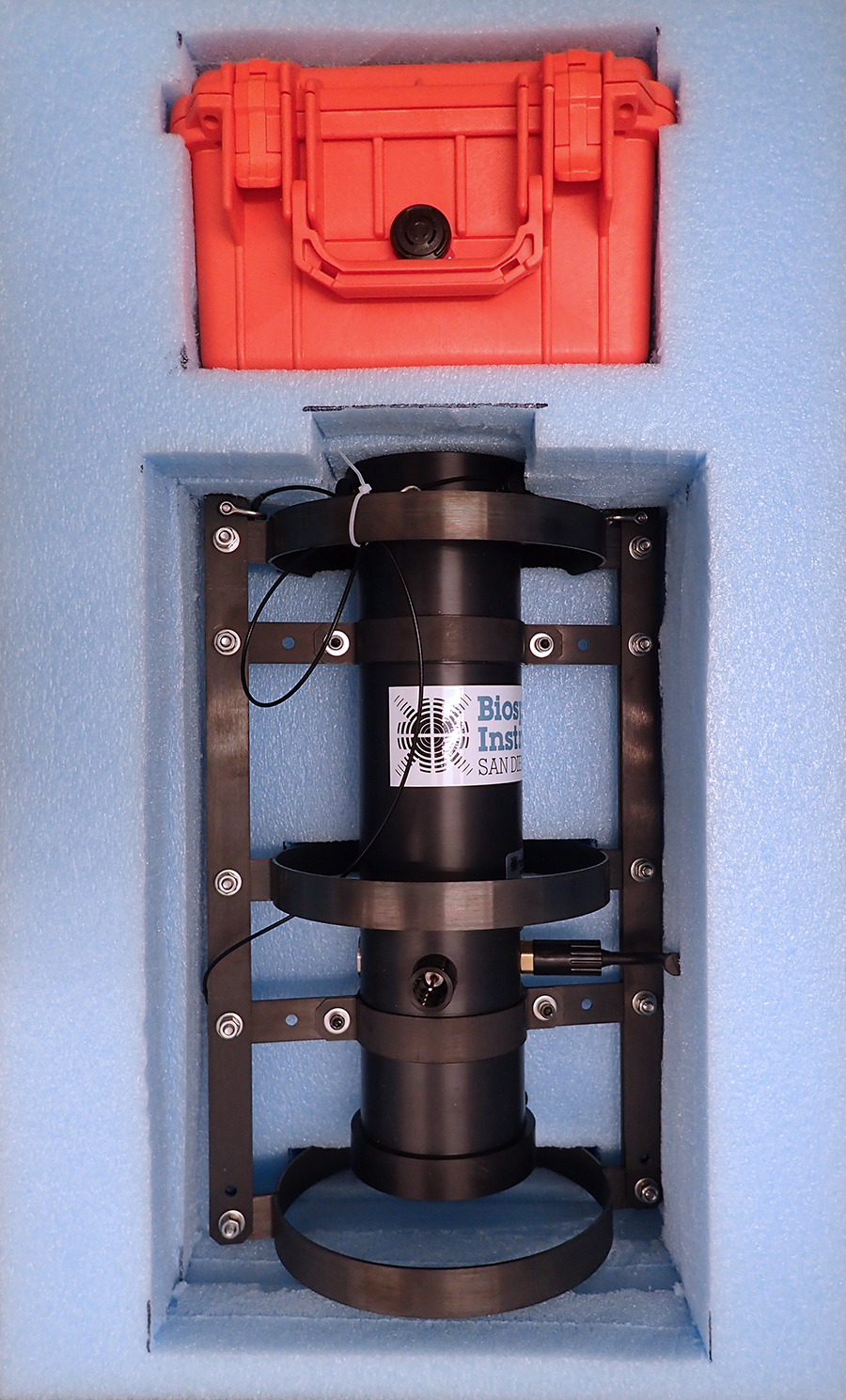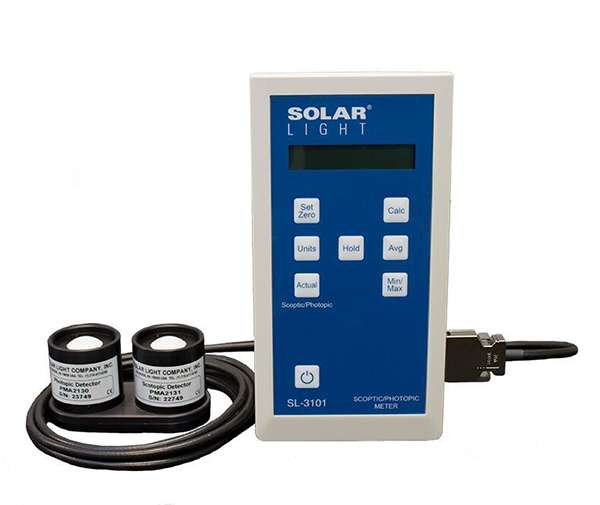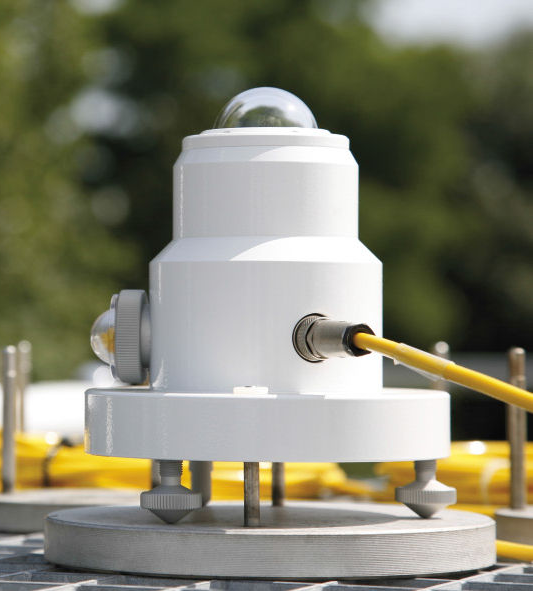Biospherical Profiling Ultraviolet Radiometer - PUV-2500
Biospherical Instruments' PUV-2500 Profiling Ultraviolet Radiometers are battery-powered, submersible radiometers that may be operated as instantaneous profilers of UV
radiation and as data loggers — integrating and recording data from all sensor channels at user-defined intervals. The system has been specifically designed to measure downwelling (cosine) irradiance, pressure/depth, and temperature. Irradiance
bands are 305, 313, 320, 340, 380, and 395 nm, and PAR (400–700 nm). The 305 nm sensor is designed to respond to the region of the UV-B spectrum strongly affected by atmospheric ozone concentration. Similarly, the 313, 320, 340, and 395 nm detectors
incorporate custom interference filters that, in combination with UV-passing/light-blocking filters and sensitive silicon photodiodes, minimize errors associated with spectral leakage.




